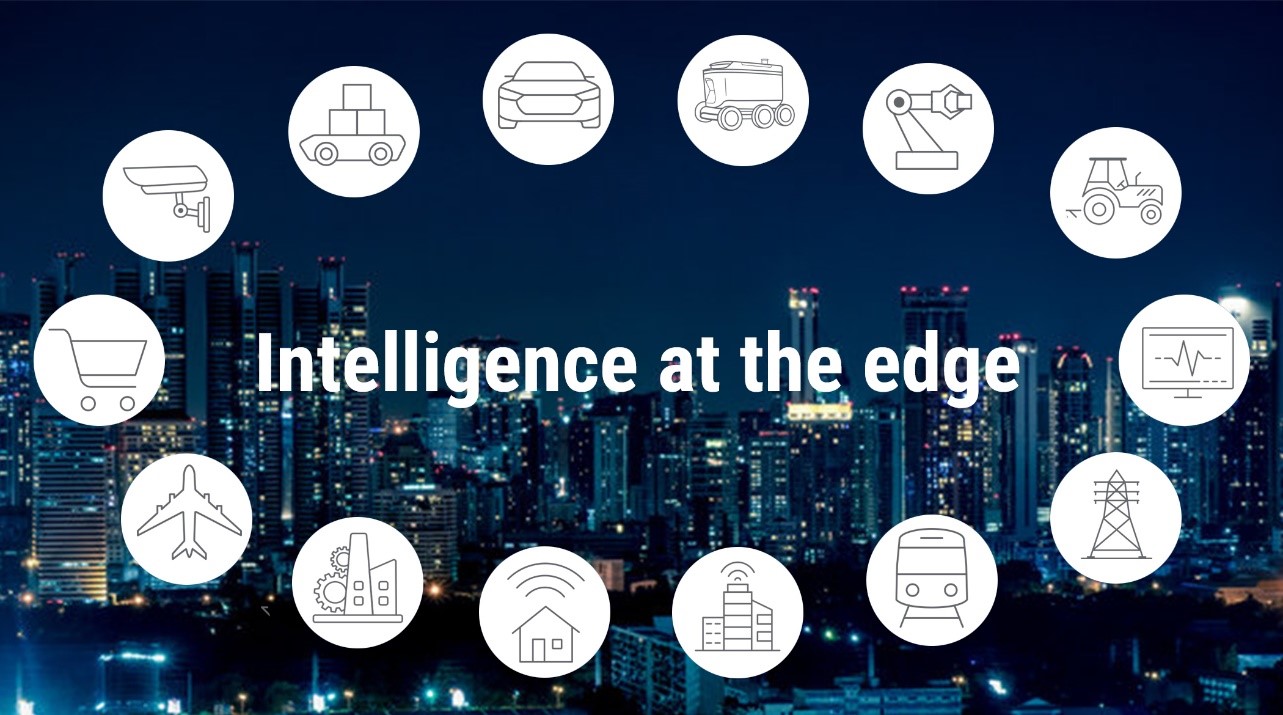SPRACZ2 August 2022 TDA4VM , TDA4VM-Q1
ADVANCE INFORMATION
1.2 End Equipments
The AI-enabled vision market is an exciting area with rapid growth expected in the next few years. Vision based analytics have broad use cases across many different markets and end equipment as shown in Figure 1-2.
 Figure 1-2 Example Vision AI
applications
Figure 1-2 Example Vision AI
applicationsFor example, a robot in factory or warehouse setting or a last-mile robot can use vision-based analytics to do the below functions.
- Obstacle detection
- Pose estimation
A surveillance camera can be smarter with edgeAI functionality by analyzing the objects to do extended functions such as:
- Automatic object detection
- Intrusion and hazard detection
- Safety monitoring
A smart shopping cart can use vision-based analytics to completely automate shopping experience for better efficiency and lower costs to consumers by adding functions such as:
- Automatic checkout
- Real-time pricing and nutrition information display
- Retail Analytics